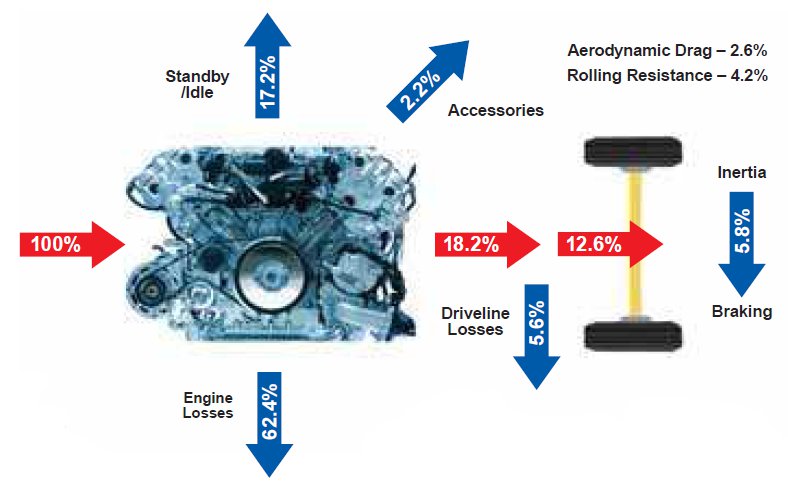A great article was published in the July Preferred Customers edition of AMSOIL Magazine titled “Frictional losses account for big part of fuel energy inputs“.
The article shows where most of the energy associated with a unit of fuel is consumed or wasted by a vehicle. The spoiler is that only about 12.6% of the fuel energy is passed through the system to drive the wheels of the vehicle. Think how your fuel economy could improve if you could decrease wasted energy by friction – even small gains in reducing friction will add up at the pump.
Some of the AMSOIL fluids you can install in your vehicle to reduce friction include:
- Synthetic engine oils – the article suggests half a percent increase by using a synthetic oil of the proper weight for your engine. See the AMSOIL application guide for your vehicle and look at the Maximum Performance entry for your best fuel efficiency. Moving to a more energy conserving oil like 0W-20 instead of 5W-20 will also show a slight fuel efficiency improvement.
- Transmission fluids – use the specification that your manufacturer suggests. AMSOIL has a number of transmission fluids that will meet and exceed those specifications for most vehicles.
- Synthetic gear oils – if your vehicle has a transfer case or differential switching to a synthetic like SVG will help reduce friction in the driveline.
- Performance Improver Fuel Additive – Every 10,000km or so run a bottle of P.i. through your gas tank to clean up the fuel system. I do this instead of spending $70 on a “fuel injection service” with my mechanic. Newer vehicles will not see an improvement since they should still have relatively clean systems that aren’t wasting as much fuel.
Standby/Idle cannot be modified very much. You’ll always get that red light now and then. However it is good to know that newer vehicles don’t require much warm up time – if any – and most municipalities have implemented clean air idling laws which restrict idling times to a few minutes. It is easy to see how a difference of 18% would cause manufacturers to publish city/highway fuel economy numbers.
Accessories like air conditioning you can modify but I’d rather enjoy a cool cabin since my daily commute is not a race. The worst case would be having the AC on and the windows down which increases the aerodynamic drag of the vehicle and uses engine power to run the AC compressor. My general rule of thumb is AC on the highway and windows down in the city if it’s not too hot out.
Rolling resistance includes the type of tires you buy and maintenance of your brakes. A dragging brake pad or shoe will cause more friction through heat resulting in poor fuel economy.
The biggest factor in fuel economy of course is your driving style.
The faster you accelerate and the more you brake on the road the more fuel you’ll consume. I try not to drive in either extreme – just normal acceleration and try to match speed with the traffic around you. Don’t be the guy tailgating and constantly touching the brakes.
